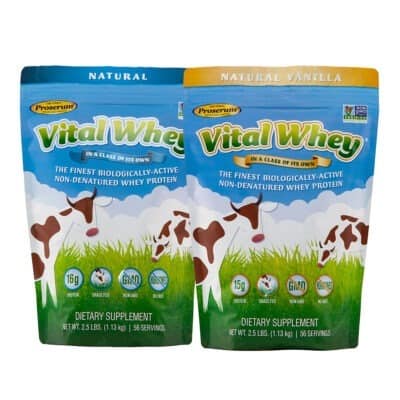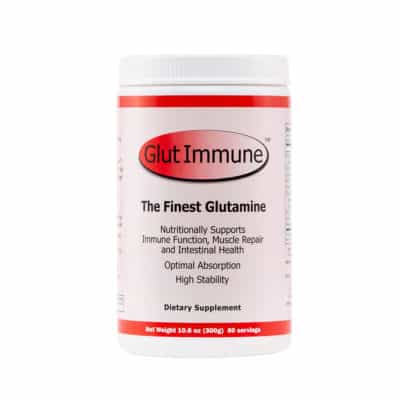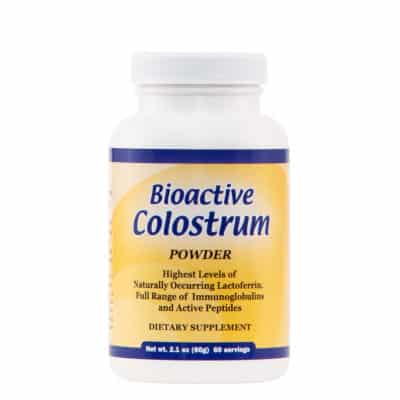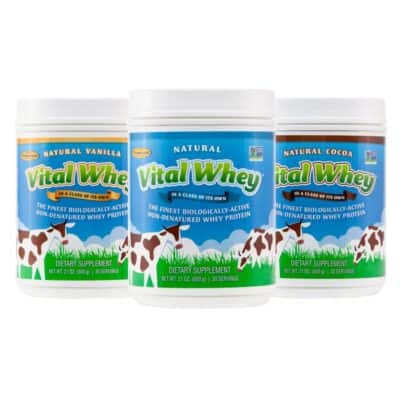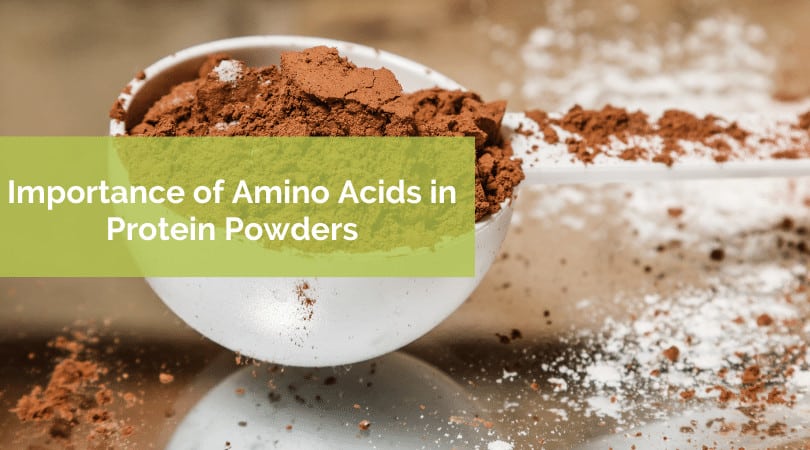
All protein is made up of amino acids, sometimes referred to as building blocks that chain together to form the larger molecules necessary for life. Protein powders are no exception—they provide a source of amino acids and are commonly used to supplement a person’s intake for the purpose of nourishing and sustaining muscle mass. It’s important to realize that protein powders on the market can vary greatly in terms of amino acid content and choosing the right one can be the difference between building muscle vs. consuming empty calories.
When choosing the right protein powder, it is important to have a general understanding of amino acids. Let’s take a deep dive into the benefits of amino acids and why their composition is important when choosing a protein powder.
What are Amino Acids?
Amino acids are the building blocks of protein. Protein is a large molecule that consists of multiple amino acids chained together, then folded up into various shapes. The types of amino acids present and the order they are found in determines the function of the protein. For example, a protein used for building new muscle would have a very different amino acid composition from a protein to be used as an enzyme. The order and type of amino acids determine the destiny of the protein molecule.
There are 20 amino acids used in the human body. The body can make eleven types of amino acids on its own, from either other amino acids or nutrients. However, nine are considered “essential” in that they must come from food. The nine essential amino acids are: leucine, isoleucine, lysine, methionine, phenylalanine, threonine, histidine, tryptophan and valine. Each of these amino acids has a specific daily recommended intake.
Many foods contain some amino acids, but only a few foods have all nine. When a food has all nine amino acids it is considered a “complete” protein. When it is lacking one or more it is an “incomplete” protein. Animal foods, such as milk, poultry, fish and meat, are all complete proteins. Plant-proteins, such as beans, nuts and seeds, are incomplete proteins. The only exception is soy, which does have all nine essential amino acids. Quinoa and bulgur do have all nine essential amino acids, but the quantity is not high enough for those to be considered “complete” proteins.
In order to meet your daily amino acid needs, ideally you should eat a variety of high protein foods, from both animal and plant sources. You can meet your protein needs with plant foods alone, but it will require some planning and learning about complementary proteins.
Complementary proteins are foods that together form a complete protein. For example, beans are low in methionine, whereas rice is low in lysine. When eaten together, rice and beans make a complete protein because the amino acids in one fill in the gaps in the other. These complementary proteins do not even need to be eaten at the same meal, you can eat rice at lunch and beans at dinner, and still get all the amino acids you need. Your body is smart enough to pull out the amino acids it needs from your diet. Well-planned vegetarian diets can provide all the amino acids you need.
The easiest way to meet your daily protein needs is to eat a high protein food with each meal. As we mentioned, for optimal nutrition, you should vary between plant and animal sources of protein. Unless you choose to follow a strictly vegan diet, there is no need to worry about getting enough of each essential amino acid when planning out your daily routine.
Health Benefits of Amino Acids
Amino acids have many health benefits. Since they are the building blocks of protein, they play a role in muscle growth, enzymatic reactions, tissue repair, nutrient absorption, immune function and proper digestion.
Each individual amino acid also has some of its own unique benefits. Here are a few of the highlights:
- Valine is one of the branched-chain amino acids that helps with muscle growth, enhances energy, and increases endurance. It also lowers blood sugar and increases growth hormone production.
- Phenylalanine is a precursor to multiple neurotransmitters that may help with mood and sleep. It is also critical in helping the body make other essential and non-essential amino acids. It may help manage certain skin disorders and improve mood and pain.
- Threonine is part of the structural proteins of the skin, collagen and elastin, therefore it is critical for strong bones and wound healing. It also plays a role in keeping heart muscle healthy. It helps the body use fat and is needed for healthy immune function.
- Methionine is needed for detoxification and metabolism. It also helps the body absorb important minerals, such as zinc and selenium. It is critical for healthy growth, skin and nail strength.
- Tryptophan is a precursor to neurotransmitters that help regulate appetite, sleep and mood. It may also help with pain management.
- Leucine is another branched-chain amino acid that is needed for muscle growth, blood sugar regulation and wound healing. It may also help with weight management.
- Isoleucine is also a branched-chain amino acid involved in stimulating muscle metabolism, immune function, blood sugar regulation and energy. It helps the body make red blood cells, essential for carrying oxygen.
- Histidine is needed for the production of histamine which is important for sleep, digestion and immune function. It plays a critical role in helping the body utilize trace minerals, like copper and zinc.
- Lysine helps make hormones, regulate anxiety, absorb calcium and maintain a healthy immune function. It may also help in the prevention and treatment of cold sores and assist with wound healing..
- Cysteine is one of the three components needed by the body to synthesize glutathione – the body’s major antioxidant. It is also critical for reproduction, respiration and brain health.
As you can see, these amino acids are extremely important building blocks with lots of different functions in the body. This is why it is critical to eat a wide-variety of high protein foods to ensure your body has enough amino acids to function at its best.
Amino Acids in Whey Protein
There are many different options for protein powders on the market, but the amino acid content in them can vary significantly. Whey protein, made from milk, is one of the best absorbed sources of amino acids that also has a complete amino acid profile. The amino acids in whey protein include all of the essential amino acids along with many non-essentials which help to compliment the bioavailability and function of your protein.
The types of amino acids in the different types of whey protein on the market won’t differ too much, although the total amino acid content may be higher per weight depending on the product. The whey protein concentrate amino acid profile will be about the same as hydrolysate or isolate. But, since whey protein concentrate is higher in fat and carbohydrates, by weight it will contain fewer total amino acids. That being said, whey protein concentrate is less processed and contains beneficial bioactive proteins, not found in more processed products.
The amino acids in whey protein make it a nutrient-dense source that is great for those who may not be adequately meeting their protein needs, who have higher needs than most, or for those who just want to optimize the fuel they use to nourish their bodies. Whey has been found to improve exercise performance, help maintain muscle mass, promote weight loss, and enhance immune function. It is truly the optimal protein in terms of nutrition and amino acid composition.
Choosing a Protein Powder
If you want to get all the essential amino acids from your protein powder with the least effort, the best choices are whey, casein, egg or soy protein. Each of these will provide all nine essential amino acids.
Collagen and other plant-based proteins such as brown rice or pea protein are not complete proteins and do not have all nine essential amino acids. Collagen is missing the essential amino acid tryptophan, so it should not be relied upon exclusively as a source of protein. Generally, plant-based proteins are found as blends that when mixed together do create a complete protein. Just be sure to read the label.
We wrote an article that compares the seven most common types of protein powders and weighed the pros and cons of each, check it out here.
To get the most for your money, when you are choosing a protein powder you want to be sure to choose a product that is the least processed. The amino acids in whey protein and other protein powders are very sensitive to heat. When exposed to heat during processing, the proteins can start to break down or become denatured. This decreases their effectiveness and damages many immune-boosting proteins and nutrients.
The source of the whey also matters. Whey is made from the liquid part of milk, after the solids have been removed. Therefore, the quality and type of milk it is sourced from matters for the nutrition and fat composition as well. Well Wisdom uses only fresh milk from cows that graze on natural pastures all year long. The quality of the milk improves the quality of the final product, enhancing its nutrition composition.
If you need ideas for how to best use whey protein, check out our recipes section for tons of delicious shakes, bars and other treats. There is a lot to think about when choosing a protein powder, but always consider quality first to help support your health, muscles and immune system.
References:
- Melina V, Craig W, Levin S. Position of the Academy of Nutrition and Dietetics: Vegetarian Diets. J Acad Nutr Diet. 2016;116(12):1970-1980.
- PubChem. Valine. https://pubchem.ncbi.nlm.nih.gov/compound/Valine
- PubChem. Phenylalanine. https://pubchem.ncbi.nlm.nih.gov/compound/6140
- PubChem. Threonine. https://pubchem.ncbi.nlm.nih.gov/compound/6288
- PubChem. Methionine. https://pubchem.ncbi.nlm.nih.gov/compound/6137
- Friedman M. Analysis, Nutrition, and Health Benefits of Tryptophan. Int J Tryptophan Res. 2018;11:1178646918802282.
- PubChem. Leucine. https://pubchem.ncbi.nlm.nih.gov/compound/6106
- PubChem. Isoleucine. https://pubchem.ncbi.nlm.nih.gov/compound/6306
- Holeček M. Histidine in Health and Disease: Metabolism, Physiological Importance, and Use as a Supplement. Nutrients. 2020;12(3).
- PubChem. Lysine. https://pubchem.ncbi.nlm.nih.gov/compound/5962
- PubChem. Cysteine. https://pubchem.ncbi.nlm.nih.gov/compound/5862
- Should You Take Whey Protein Powder After Surgery? - March 2, 2023
- How Much Protein is Too Much? - January 30, 2023
- Is Whey Protein Keto Friendly? - January 30, 2023

